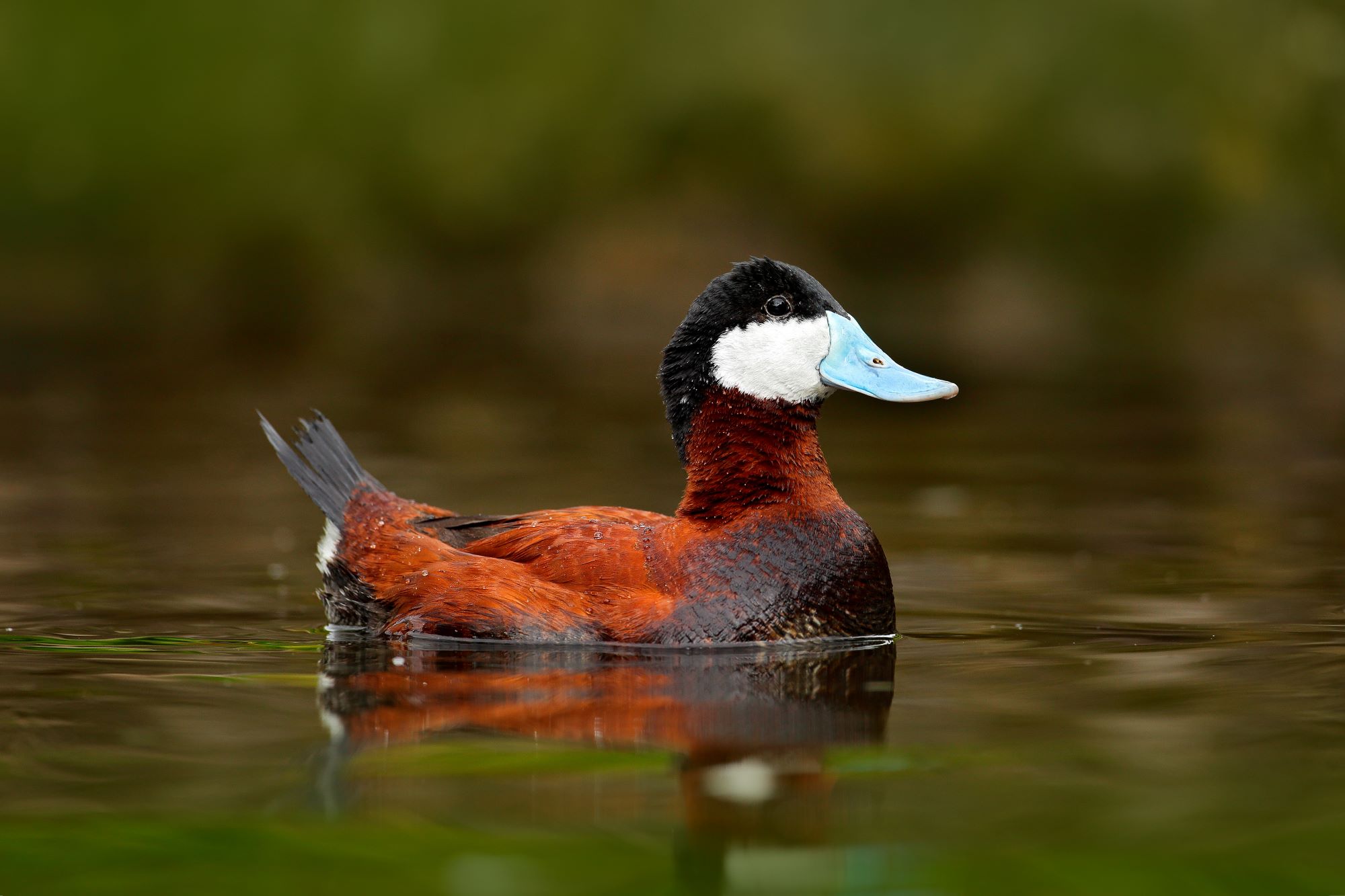
Ruddy Ducks in Utah
Ruddy Ducks, a small yet distinctive species of waterfowl, are a notable presence in Utah's wetlands and marshes. Known scientifically as Oxyura jamaicensis, Ruddy Ducks are easily recognizable by their compact, stout bodies and stiff, upright tails. Males, particularly striking during the breeding season, display rich chestnut bodies, sky-blue bills, and bold black-and-white faces. Females and non-breeding males are more subdued, with mottled brown plumage and darker bills, but they still retain the characteristic tail posture that makes them easily identifiable. In Utah, Ruddy Ducks are commonly found in freshwater marshes, ponds, and lakes, where they prefer areas with abundant aquatic vegetation, which provides both food and cover.
Ruddy Ducks are diving ducks, adept at foraging underwater for their primary diet of seeds, roots, and aquatic invertebrates. They are known for their remarkable diving ability, often disappearing beneath the water's surface for extended periods as they search for food. This foraging behavior is vital for their survival, especially in the nutrient-rich wetlands of Utah, where aquatic vegetation is plentiful. During the breeding season, their diet shifts to include more protein-rich foods like insects and crustaceans, essential for the development of eggs and the growth of hatchlings.
Breeding is a significant period in the life cycle of Ruddy Ducks in Utah. These ducks are monogamous during the breeding season, with males performing elaborate courtship displays that include bubbling calls and striking water with their bills to attract females. Nesting usually occurs in dense marsh vegetation, where females construct nests by weaving together plant materials and down feathers. The female lays a clutch of 6 to 10 eggs, which she incubates for about 25 days. Once hatched, the ducklings are precocial, meaning they are relatively mature and mobile from birth and are able to feed themselves almost immediately, though they remain under the care of the mother.
Conservation of wetland habitats is crucial for the survival of Ruddy Ducks in Utah. These habitats not only provide the necessary food resources but also offer protection from predators and nesting sites. Human activities, such as development and water diversion, can pose significant threats to these wetland ecosystems, thereby impacting the Ruddy Duck populations. Conservation efforts in Utah, including the preservation and restoration of wetlands, are essential to ensure that these ecosystems remain healthy and capable of supporting the diverse wildlife, including Ruddy Ducks, that depend on them.
Ruddy Ducks, with their unique characteristics and behaviors, add to the rich tapestry of birdlife in Utah's natural landscapes. For birdwatchers and nature enthusiasts, observing Ruddy Ducks can be a delightful experience, whether it’s marveling at the males' vibrant breeding plumage or watching the ducks dive and forage in their natural habitat. These ducks play a significant role in the ecological dynamics of wetland areas, and their presence is a marker of the health and vitality of these environments. In Utah, the Ruddy Duck stands as a symbol of the beauty and complexity of wetland ecosystems, and a reminder of the importance of preserving these vital natural habitats.